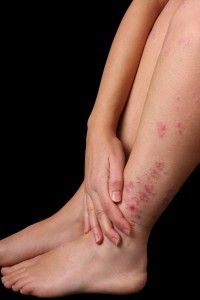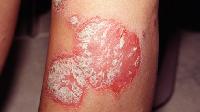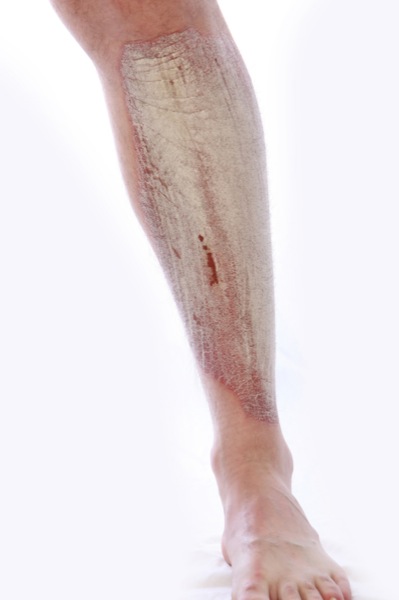Symptoms of Psoriasis by Body Part and Type of Psoriasis
If you know the symptoms of psoriasis you can go to a doctor and get a definitive diagnosis and the appropriate kind of treatment best suited to your psoriasis. Otherwise if you have a skin problem, you may simply put it down to allergy or a skin rash and keep on suffering for a long time, with the symptoms getting worse.
Psoriasis can start off by being distressing and embarrassing and then can lead to psychological and social problems specially if it affects visible areas of the skin or a great deal of itching is also present. Psoriasis affects various parts of the body and the many types of psoriasis cause different skin problems.
The Body Parts Affected
 Symptoms of psoriasis
Symptoms of psoriasisPsoriasis affects various parts of the body – you may have a very localized psoriatic region or the lesions may cover large parts of the body. Among the areas affected by psoriasis are:
Knees
Elbows
Soles of the feet
Lower back
Groin area
Armpits
Hands
Feet
Buttocks
Under the breasts
Nails
Scalp
With thickened skin, raised areas, bumps, scales, pustules, scaly skin and red marks psoriasis does not present a pretty picture and an episode can be quite distressing. Unfortunately, the disorder is usually not curable but manageable and, if you are fortunate, you may suffer from it occasionally and go through times when everything is normal. At times, you may suffer from a one-time episode of psoriasis.
Kinds of Psoriasis
While psoriasis is a general name for this kind of skin condition, each type of psoriasis is somewhat different, the common ones being:
- Plaque psoriasis or psoriasis vulgaris – With raised bumps covered with silver or white scales often over large areas of the skin, this kind of psoriasis is the most common form of psoriasis. The patches can be itchy and uneven and scratching can cause them to swell. When the nails are affected they can thicken, crumble and develop black patches.
- Guttate psoriasis – This psoriasis shows up as small red spots often in the shape of teardrops that affect large parts of the body. Guttate psoriasis often occurs after an illness or trauma or even an episode of plaque psoriasis and sometimes disappears on its own after several weeks.
- Pustular psoriasis – When the skin is full of pus filled bumps that are red, swollen and painful with red skin all around, it is postural psoriasis. If it is only on the hands or feet it may be called palmoplantar psoriasis.
- Inverse psoriasis or flexural psoriasis – Unlike the scaly skin of other types of psoriasis this presents smooth and inflamed skin patches that feel sore and often occur in the skin fold like the groin area and armpits.
- Erythrodermic psoriasis or exfoliative psoriasis – Swelling, itching and pain and shedding skin are characteristic of this kind of psoriasis. When this covers a large area of the body and is accompanied by fever and pain, it can be dangerous. Dark red patches that are similar to burnt skin, a fast heartbeat, skin temperature that is too hot or too cold are all danger signs that can be fatal.

Symptoms of Psoriasis vs Other Skin Conditions
Allergies, rashes, shingles, eczema, bites and many other skin conditions cause raised skin patches, spots and itching and initially you may put down a few spots or lesions to something else and perhaps try some over the counter or home remedies to treat the problem. But when you know the symptoms of psoriasis you can seek the appropriate diagnosis and then get the correct treatment so that you can limit the effects of the psoriasis or learn to manage it.
Other Psoriasis Symptoms
- Genital psoriasis
- Psoriasis hair loss
- Psoriasis of the scalp
- Psoriasis on the foot
- Psoriasis on the hand
- Psoriasis on the penis
- Psoriasis plaques
- Scalp psoriasis symptoms
- Scalp psoriasis
- Signs of psoriasis
Get more information about the Symptoms of Psoriasis
National Institute of Arthritis and Musculoskeletal and Skin Diseases
 Psoriasis en la pierna
Psoriasis en la piernaPágina de inicio
Mapa del sitio
Mapa del sitio en orden alfabético
